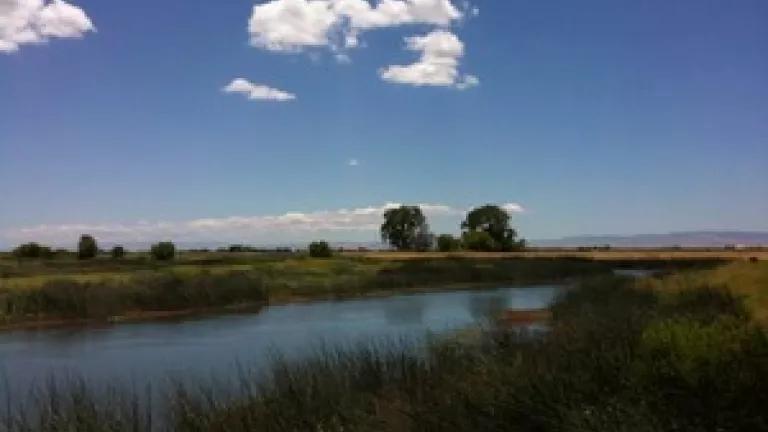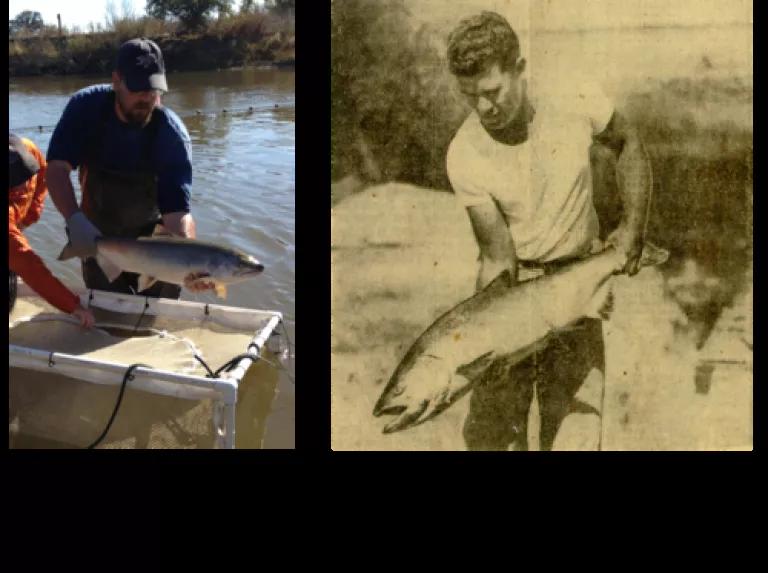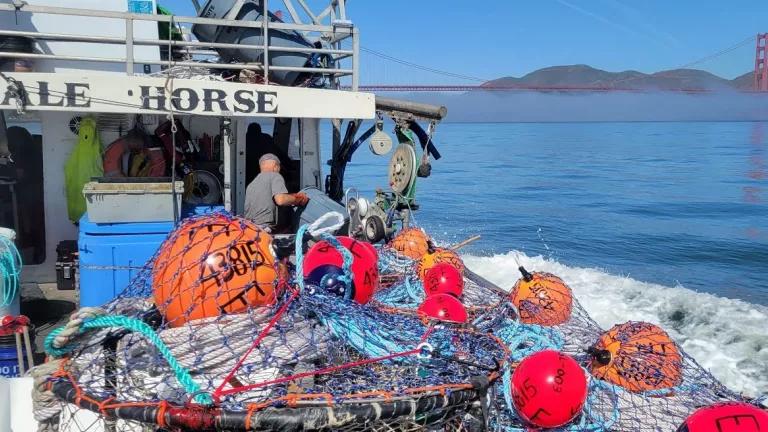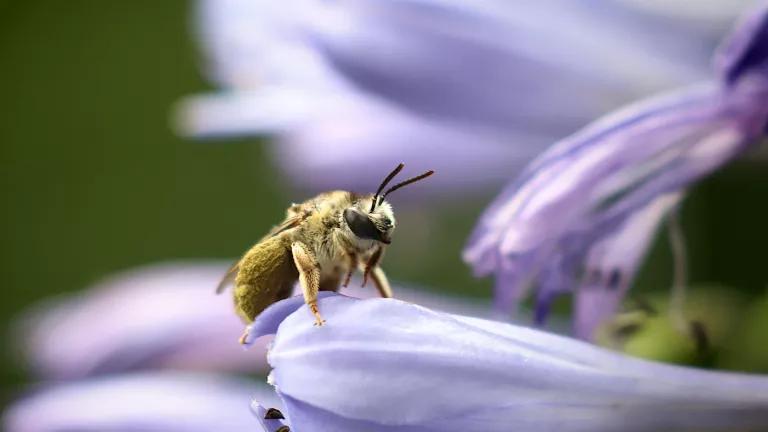
Standing on the banks of the San Joaquin River earlier this week, I saw something I’ve waited over a decade to witness - a Chinook salmon gliding through the river’s clear water. For the first time in over 62 years, the San Joaquin River once again has salmon swimming through its flows, searching for a place to spawn and continue the cycle of life. As part of the San Joaquin River Restoration Program, fisheries biologists have begun moving adult fall run Chinook salmon upstream and releasing them into the river below Friant dam. This is a historic moment not only for all those who have worked to restore the river and its salmon runs, but also for San Joaquin Valley communities.
It was a crisp and clear fall morning last Tuesday along the San Joaquin near its confluence with the Merced River. Restoration Program fish biologists were out checking fish traps, which are being used to catch fish for the translocation effort. At last count, nearly 70 fish had been moved into the upper river, providing invaluable information about fish migration and habitat use. With a little luck and support, these fish will spawn and contribute to future generations of returning salmon.
As the biologists checked the trap, I was excited at the prospect of seeing my first salmon on the San Joaquin. Having personally worked on the project since 2000, I have thought about and worked towards this moment for most of my career. As luck would have it, there were six salmon in the trap - three males and three females. As I watched the biologists move the salmon to a temporary holding pen to await transport I was struck by the similarity of this moment to one 60 years ago when the California Department of Fish and Game biologist George Warner held one of the last salmon in the San Joaquin River.

In the late 1940’s, Friant Dam near Fresno was completed as part of the Central Valley Project. Within a few years, the operation of the dam began drying up the San Joaquin River, to the great concern of local landowners and fishermen. Downstream land owners sued to maintain flows in the river, and the Department of Fish and Game began a heroic effort to try to save the Chinook salmon run before it was lost. George Warner, a Department’s fisheries biologist at the time, later recounted how in 1950 they tried in vain to save the last 36 San Joaquin River salmon whose population he had watched plummet from 56,000 just four years before. Sadly, despite the efforts of the local landowners, fishermen, and the Department, the river dried up and the salmon run was soon declared extinct…..until now.
In 1988, NRDC filed a lawsuit against the federal government, who owns Friant Dam, for dewatering the river and violating state laws protecting fish. After years of litigation, a 2006 settlement agreement between farmers, environmentalists and the federal government resulted in the creation of the San Joaquin River Restoration Program to restore flows and healthy runs of spring and fall run Chinook salmon while also providing opportunities to improve water supply management. Now in its sixth year, the Restoration Program has come a long way, but there is much work to be done.
The fish releases are just the beginning of a process of reintroducing fall and spring run salmon. To achieve the long term goal of 40,000 spring and fall run Chinook salmon will require time to rebuild the populations. It will require the modification of existing water supply dams and diversion structures that make it difficult for fish to reach their historic spawning grounds. Channel improvements are needed that will restore habitat that has been lost over the decades. This habitat restoration will also improve flood protection to neighboring lands. The steps ahead are significant in size and scope; however, these improvements are already in motion and will be completed in the years to come for the benefit of fish and farmers alike.
While seeing wild salmon in the river can cause even an ardent skeptic to smile, it is important to understand that restoring salmon to the San Joaquin River is about more than just the joy of seeing wild salmon again. Salmon are part of the history and heritage of Native Americans and early settlers in San Joaquin Valley. And so is a free flowing San Joaquin River that once carried passengers and goods and now provides children a place to swim and anglers a place to fish. The San Joaquin is one of California’s great rivers and is important to the entire state. Its waters flow to the San Francisco Bay Delta which is a source of drinking water for 25 million Californians – some as far away as Los Angeles. Its restored salmon runs will help California achieve its goals and commitments to restore its beleaguered salmon runs and help revive the state’s commercial salmon fishery.
I had the pleasure of meeting George Warner in 2003 shortly before he passed away. Though it had been many years, he still spoke passionately about the San Joaquin River and its salmon. I am sorry that he did not get to see this day but I bet he’d be happy to see the work that is being done to make sure that future generations will know a living San Joaquin River full of wild salmon.
To Learn More:
NRDC: Restoring the San Joaquin River
San Joaquin River Restoration Program



